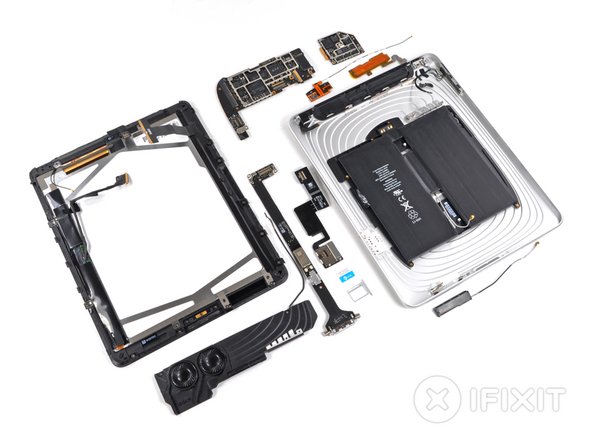
We leisurely waltzed into line around 4:40 today and were one of the first of 30 people to get an iPad 3G at our local Apple store!
It’s great not to have to fly across the world and wait overnight in line.
The iPad 3G definitely shows some interesting differences when compared to its Wi-Fi-only sibling, mostly due to its additional 3G / GPS functionality.
Teardown Highlights:
- The immediate visible difference is the inclusion of a black plastic RF window on top of the iPad for better antenna reception.
- The black RF window significantly changes the opening procedure. You cannot start separating the display using the notches on the top (à la Wi-Fi version), since that will undoubtedly break the RF window. You have to start from the right side and gingerly proceed to the top and bottom of the iPad.
- There are actually FIVE antennas in this iPad:
- Two antennas handle the cell reception — one is in the RF window on top, the other attaches to the LCD frame.
- There’s a single GPS antenna that is also housed in the RF window on top.
- Just like the iPad Wi-Fi, there are two antennas that handle Wi-Fi / Bluetooth connectivity, one in the Apple logo and another to the left of the dock connector.
- Who would’ve thought: Apple uses the same 3G baseband processor in both the iPhone 3GS and the iPad 3G.
- The baseband processor in question is the Infineon 337S3754 PMB 8878 X-Gold IC. It was actually white-labeled on the production unit, but with enough sleuthing we were able to confirm its true identity.
- The iPad 3G has a Broadcom BCM4750UBG Single-Chip AGPS Solution, whereas the iPhone 3GS uses an Infineon Hammerhead II package. Big win for Broadcom!







0 Yorum